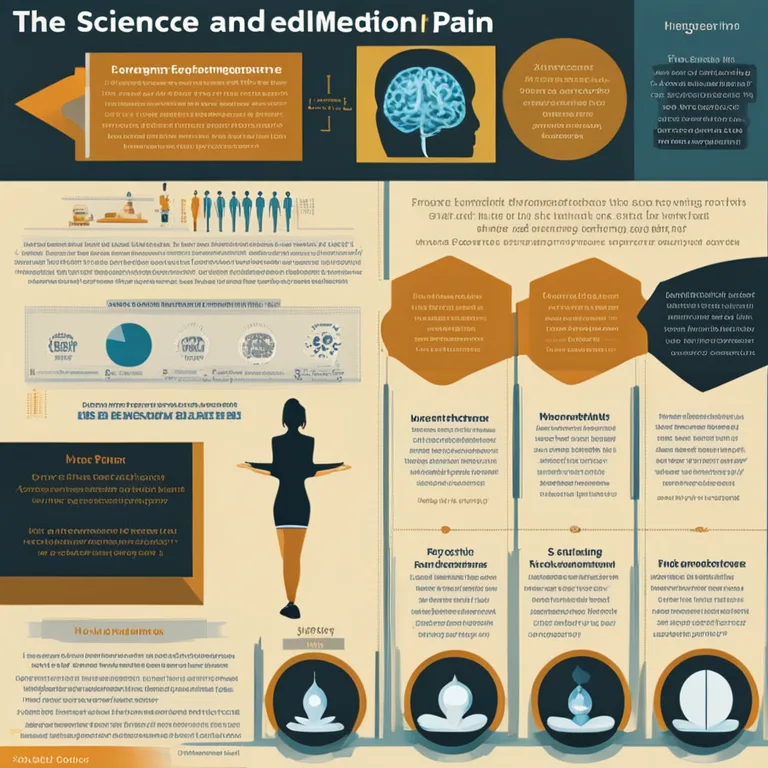
Meditation Techniques For Pain
Discover effective meditation methods to manage and reduce pain, offering a holistic approach to pain relief.
article by Hina Kurosawa
Introduction to Pain and Meditation
Pain is a complex experience that encompasses physical, emotional, and psychological aspects. Chronic pain particularly affects numerous individuals, impacting their quality of life. Interestingly, meditation has emerged as a promising non-pharmacological approach to pain management. The link between the mind and body suggests that by altering our mental state through meditation, we can influence how we perceive and process pain. Recent studies continue to explore the potential of various meditation techniques to not only mitigate pain perception but also improve one's overall well-being. As we advance through this article, we will delve into specific meditation methods that can help people cope with both acute and chronic pain.

The Science Behind Meditation and Pain
The efficacy of meditation in pain reduction is backed by evolving scientific evidence. Neuroimaging technologies have shown that meditation can alter brain structures and functions associated with pain processing, such as the prefrontal cortex and the anterior cingulate cortex. Additionally, meditation is known to reduce stress and anxiety, which are often intertwined with the experience of pain. The practice can also lead to the release of endorphins, which naturally enhance mood and provide pain relief. Understandably, long-term meditation may even alter pain thresholds, demonstrating remarkable potential for those seeking alternatives to traditional pain management strategies.

Beginning with Breathwork
Breath-focused meditation is one of the simplest yet most powerful techniques for pain management. By concentrating on the rhythm of inhalation and exhalation, practitioners can cultivate a sense of calm, which helps dissolve tension and pain. To practice, find a comfortable seated position, close your eyes, and gradually deepen your breaths. Allow the mind to focus solely on the movement of air in and out of your body. As thoughts arise, gently redirect your attention to your breathing. This technique encourages relaxation of the muscles and mind, providing an analgesic effect over time.

Mindfulness Meditation for Pain
Mindfulness meditation teaches individuals to observe their pain with detachment, recognizing it as a transient experience. This practice involves sitting quietly, focusing on the breath, and then expanding awareness to include all sensations, thoughts, and emotions without judgment. When a pain sensation surfaces, acknowledge it, and return to your breath. Mindfulness can shift the way one relates to pain, reducing the suffering associated with it. By regularly engaging in mindfulness, the pain may be perceived as less intense, and one's reaction to it can become more controlled and less distressing.

Body Scan for Deep Awareness
A body scan involves mentally traversing through different parts of the body to promote awareness and identify areas of tension and pain. During this meditation, you systematically focus on each body part, beginning with the toes and moving upwards. As you place your attention on a specific area, breathe into it, and imagine releasing any pain or tightness with every exhale. This not only promotes relaxation but also fosters a deeper understanding of how pain manifests within the body, which can be crucial in addressing the psychological aspects of pain.
Visualization for Pain Relief
Visualization, or guided imagery, is a powerful tool that involves creating mental images that evoke feelings of peace and relaxation, thereby diverting attention away from pain. Picture a calming environment or scenario, and immerse yourself in it, engaging all your senses. By vividly imagining a place or situation where you feel safe and comfortable, you can induce a relaxation response that reduces the intensity of the pain. It’s a technique that leverages the mind-body connection, proving beneficial in pain management.
Yoga Nidra and Pain Management
Yoga Nidra, commonly known as yogic sleep, is a meditative practice bringing about deep relaxation while remaining consciously aware. It involves lying down in a comfortable position and following a guided meditation that leads you through various stages of body and breath awareness, culminating in a state of profound physical and mental relaxation. This practice is known to decrease tension and heighten the threshold for pain, making it an effective adjunct to pain management strategies.
Integrating Meditation into Your Routine
For meditation to effectively manage pain, it needs to become a consistent practice. Start with short sessions, gradually increasing as you become more comfortable with the process. It's important to create a quiet, distraction-free environment to enhance focus and relaxation. Encourage patience, as the benefits accrue over time, with increasingly noticeable improvements in pain perception and emotional resilience against discomfort.
Published: 12/20/2023
Modified: 12/20/2023
More predictions
Come back here soon to learn more about yourself and your future


Meditation Made Simple
Discover simple meditation techniques perfect for beginners. Integrate mindfulness seamlessly into your daily routine for a more balanced life.


Mindful Sketching: Blending Art With Presence
Delve into the serene practice of meditation and mindfulness drawing to foster inner peace and creative expression.